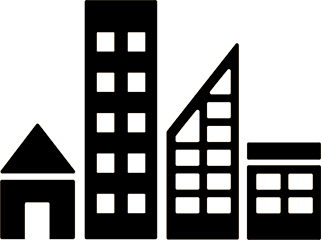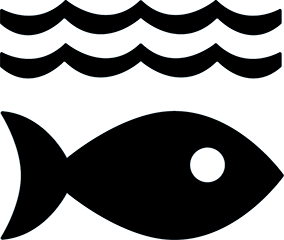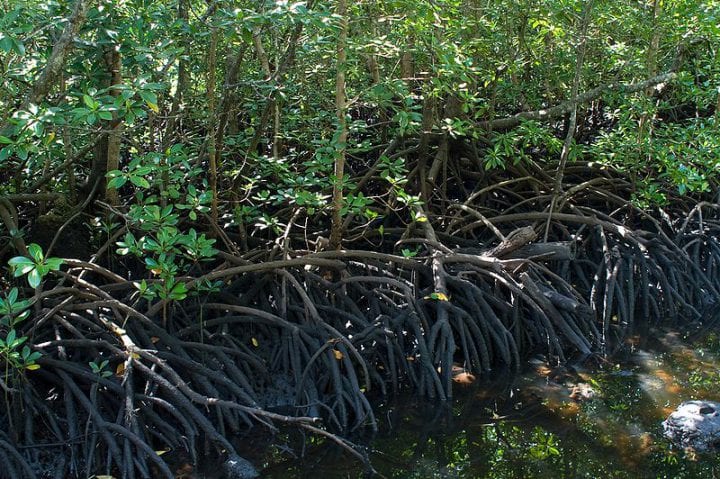UN Sustainable Development Goals Addressed
-

Goal 11: Sustainable Cities & Communities
-

Goal 14: Life Below Water
2019 Global Design Challenge Finalist
This design concept was developed by participants in the Institute’s Global Design Challenge. The descriptions below are from the team’s competition entry materials.
Location: New Zealand
Team members: Cynthia Fishman, Asha Singhal, Annie Kell, Adrian Roadman
Innovation Details
As sea levels rise, coastal regions and cities are experiencing more and more flooding. It is estimated that by 2100, sea levels could rise by a foot. B.L.O.T.S. looked to numerous organisms for water management inspiration to find an adaptable and resilient way to deal with infrastructure being inundated with water. The B.L.O.T.S. system absorbs, redirects, filters, and stores flood water. The system is adaptable to any situation, whether it be a flooded street, playground, or building, and can be utilized by anyone.
What problem does the solution solve? As climate change continues to progress, coastal regions and cities are already starting to feel the effects of the sea-level rise caused by the rapidly-melting glaciers and ice caps. These regions are experiencing “sunny day flooding”, where the sea-level rise regularly pushes high tide levels past the point that coastal infrastructure was designed to accommodate, without needing a storm event to do so. Roads, sidewalks, and green areas are inundated by sea water coming over sea barriers, up through sewers, and even up through the ground water. As time progresses, it will only continue to worsen – it is estimated that by 2100, sea levels could rise by a foot. This has become a prevalent issue in Florida USA, where the cities were already at or near sea level pre-climate change. 2.4 million people live within 4 feet of the current high tide mark in Florida, and sea-level rise is predicted to rise another 6” in the next 15 years. In addition, the ground under this region is largely porous limestone, making the area even more vulnerable to flooding from rising groundwater.
What is the technology and how does it work? B.L.O.T.S. is based on our champion organisms that are experts in absorbing, directing, filtering, and storing liquid. The system is adaptable to any situation, whether it be a flooded street, playground, or building and can be utilized by anyone. The design is accompanied by a mobile app that alerts residents to areas that are flooding and directs people (via GPS embedded in the components) to where available units are located. In this way, residents are empowered and able to self-organize in order to blot the water away. After capturing the water, it is passively directed away from the flooded area and then has the capability of being filtered and/or stored locally or directed to waste/stormwater facilities for future use. An unintended consequence of the shoreline moving further inland is that water treatment facilities and water lines can be compromised, making useable water in demand. B.L.O.T.S. has the capability to attach filter components to the system in order to remove particulates. Human’s effect on the planet has caused disturbances that our way of life is not prepared for, leaving many people feeling helpless. B.L.O.T.S. can be part of a solution that allows communities to adapt to these climate change impacts.
How it is biomimetic? Our team learned from numerous organisms how to manage water. From the small intestine we learned how to absorb fluid, from lymph vessels we learned how to passively direct fluid, from mangrove roots we learned how to filter particulates from fluid, and from the combination of the hottentot bread, resurrection fern, and lungfish we learned how to store fluid. At first we tried to incorporate all of these champion organisms into one product. However we quickly realized that although these functions work in harmony as a solution to sea-level rise, they needed to be kept separate and form a system in order to work properly. Our design relies on structure, material, and earth’s operating conditions in order to provide an adaptable and resilient way to deal with infrastructure being inundated with water.
What is the solution’s impact? Human’s effect on the planet has caused disturbances that our way of life is not prepared for, leaving many people feeling helpless. B.L.O.T.S. can be part of a solution that allows communities to adapt to these climate change impacts without having to drastically change their way of life (ie moving, paying for expensive upgrades to their built environment, etc). B.L.O.T.S. allows community members to feel empowered and be part of an adaptable solution that causes minimal disturbance to their surroundings, and has the potential to create a much needed resource (potable water). This system can be employed quickly to places that need it the most by the people who will benefit from it the most. Collecting and removing water from places that weren’t designed to accommodate flooding will allow inhabitants to be part of a system that is making their community more resilient. And this system is not dependent on what community a person lives in as it can be utilized by anyone.




